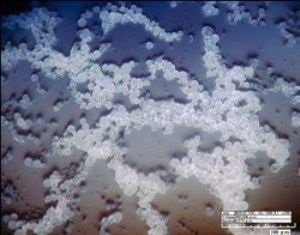New IAEA Research Explores the Impact of Microplastics on Marine Organisms – New IAEA Research Microplastics Marine Organisms - Arhive
New IAEA Research Microplastics Marine Organisms New IAEA Research Microplastics Marine Organisms New IAEA Research Microplastics Marine Organisms New IAEA Research Microplastics Marine Organisms New IAEA Research Microplastics Marine Organisms New IAEA Research Microplastics Marine Organisms
New IAEA Research Explores the Impact of Microplastics on Marine Organisms
(Video: J. Weilguny/IAEA)
 As many as 5.25 trillion plastic particles weighing 250 000 tons are floating in the oceans, according to recent estimates. This presents a serious environmental challenge: pollutants already dissolved in seawater can be attached to these plastic fragments, which marine organisms can ingest.
As many as 5.25 trillion plastic particles weighing 250 000 tons are floating in the oceans, according to recent estimates. This presents a serious environmental challenge: pollutants already dissolved in seawater can be attached to these plastic fragments, which marine organisms can ingest.
The IAEA earlier this autumn initiated an international research project to use nuclear and isotopic techniques to gain a better understanding of the effect these microplastics have on organisms and to evaluate any additional contamination risks from associated pollutants.
“While the visible impact of large plastic debris on marine environments has been well documented, the potential harm caused by microplastics is less clear,” said David Osborn, Director of the IAEA Environment Laboratories. “Nuclear and isotopic science can provide valuable information on the risk posed to marine organisms and humans and can be used by countries to support policy decisions.”
Through experiments in controlled aquaria, this research will deliver quantitative data and provide a unique window into the complex biological impact of microplastics. The information gathered will advance scientists’ understanding of the role of these plastics and associated contaminants in societally and commercially important marine organisms and help strengthen countries’ seafood safety programmes.
“Understanding to what extent microplastics can transfer hazardous contaminants to marine biota is an issue of global concern, in particular for countries that rely on fisheries as a source of food and income,” Osborn said. The research will examine whether in realistic scenarios — those found in the environment — microplastics attach pollutants from seawater or sediment, and how these plastics could transfer such contaminants to marine organisms, causing additional adverse effects on the organisms.
Microplastics originate from the weathering and disintegration of larger plastic debris, from plastic pellets used in plastics manufacturing, microplastic additives in cleaning and personal care products, and synthetic clothing. One single piece of clothing, for example, can release an estimated 1,900 synthetic microfibers when rinsed out, according to a 2016 report from the Joint Group of Experts on the Scientific Aspects of Marine Environmental Protection (GESAMP).
Microplastics and synthetic microfibers are widely present in the ocean: specifically made to be resistant, they take a long time to disintegrate and can persist in the environment for over 100 years. They are found floating or suspended in the ocean, on beaches, as well as on the ocean floor. Marine animals including mollusks — mussels, clams — and fish often mistake them for food, such as plankton, and eat them.
Due to their small size, microplastics can enter the organisms’ internal organs, where they could potentially transfer the contaminants attached to them. These can include persistent organic pollutants like polychlorinated biphenyls (PCBs) as well as trace metals like mercury and lead. The plastics and pollutants that accumulate on them enter the food chain and can be transferred to humans who eat this seafood.
THE SCIENCE
How can nuclear and isotopic techniques help?
IAEA researchers are developing methods using nuclear and isotopic techniques to precisely quantify the movement, fate and impact of plastic particles and associated organic and inorganic contaminants on a range of aquatic biota — including fish and oysters — under controlled laboratory conditions. By using radiotracers such as carbon-14, IAEA researchers can study how pollutants such as PCBs ‘attach’ themselves to microplastics in the environment and if they can dissociate or ‘detach’ from these plastics when ingested by marine animals.
IAEA researchers also use radiotracers to study the movement and fate of microplastics within the animals to understand how exactly these are taken up — whether through the digestive system or through their gills, depending on the organism. They also aim to find out if the microplastics can be eliminated, or if they clog organs. If plastics accumulate in the gut, for example, organisms could get a false sense of being full, which can negatively influence their nutrient intake.
Related Topics
Microplastics could pose big treatment challenges – Microplastics treatment challenges
New IAEA Research Microplastics Marine Organisms New IAEA Research Microplastics Marine Organisms New IAEA Research Microplastics Marine Organisms New IAEA Research Microplastics Marine Organisms New IAEA Research Microplastics Marine Organisms New IAEA Research Microplastics Marine Organisms
